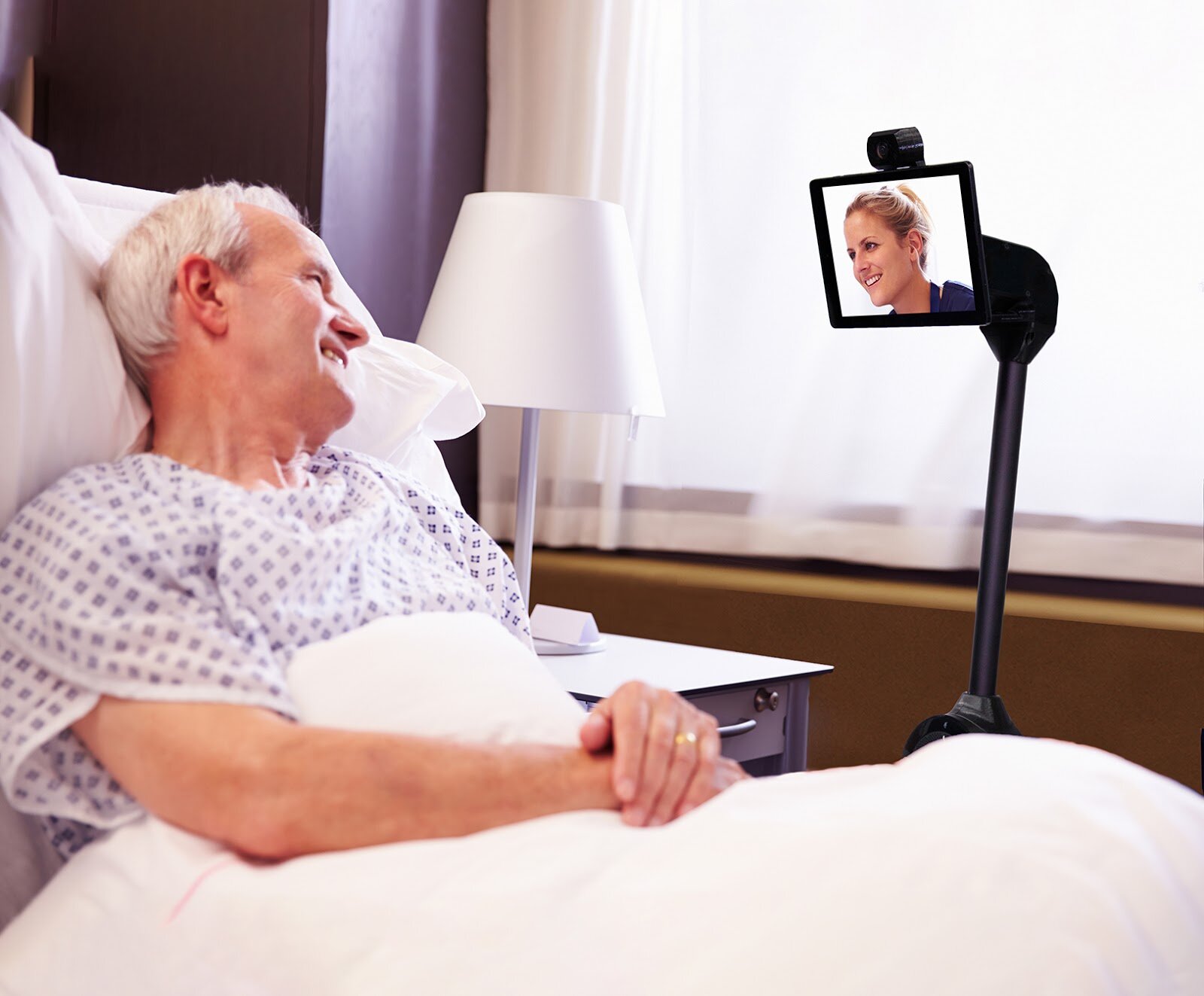Radley Robots: Connecting You with Your Loved Ones
Author: Dawn McDevitt
My 73 year-old mom was at home recovering from the coronavirus when her husband was airlifted to a bigger hospital for emergency COVID-19 care. Her only way to learn how he was doing was a daily call from a nurse. The nurse tried more than once to set up a video call between them, but fussing with an iPad wasn’t feasible amid the demands of a busy intensive care unit. What if such connections were handled by a robot? Patients could chat with a loved one allowing hospital staff to focus on patient care.
Image courtesy of OhmniLabs
Meet Calgary’s own Radley Robots, created by Savana Radley. In 2019 spinal surgery impacted her mobility for weeks. Initially she sought a solution to help her reach items. “When I looked around for help, I was surprised to find that the most common option was a $20 trash grabber that really wasn’t that effective,” said Radley. Now Radley Robots assist people in care facilities, in their homes, and in places of business.
Four robots are part of a pilot program at Silvera for Seniors, a non-profit with over 1,450 residents in supportive, as well as independent, living communities across Calgary. Video calls are the primary service. The team at Radley Robots found that some residents feel like they’re imposing when reaching out to busy family members, so the team works with family members to coordinate appointments on the residents’ behalf.
There’s no learning curve since the Radley team works behind the scenes to help clients connect. The team remotely drives the robot to the resident, chats with them on screen, then connects the family member. The whole experience is touchless. Residents enjoy it, and their families enjoy seeing their loved one’s environment. “It’s a people issue that we’re able to help solve using a robot,” notes Radley.
Beyond video calls, some of the robots are equipped with a tray and can deliver small items. If care providers are able to delegate some routine tasks, “whether it’s sharing the lunch menu or supporting recreational programming when the usual resource is away,” it can free up time to focus on other elements of care.
Image courtesy of Radley Robots
The pilot aims to show how these robots serve as enablers for people. In situations where people can’t be together, it seems especially promising. For my family, a robot-assisted video call would have been a welcome relief in the isolation imposed by COVID. Not to replace human companionship, but to facilitate it. And if the robot could also order and deliver a pizza...well bonus points.
For at-home clients, Radley Robots can enable routine check-ins, companionship, and give reminders to take meds, eat meals, and drink enough water, for example. Each robot comes with remote support, at the cost of about $75 per day. “Remote operators, real people who can understand what you say and how you need help, make a huge difference,” observes Radley.
Image courtesy of OhmniLabs
New functionality will be added in the next couple years. According to Radley “people have already built arms, grippers and even robotic hands.” Headquartered in Calgary, Radley Robots serves Canadian clients and plans to expand to specific markets in the US and the UK.
Learn more by visiting their website at https://radleyrobots.com



